Hermes, a pivotal figure in Greek mythology, embodies the quintessence of versatility and ingenuity. Known for his swift movements and cleverness, Hermes served as the messenger of the gods, a role that placed him at the center of divine and mortal interactions. This article delves into the multifaceted nature of Hermes, exploring his origins, symbols, and the myriad roles he played in ancient myths.
Mythology
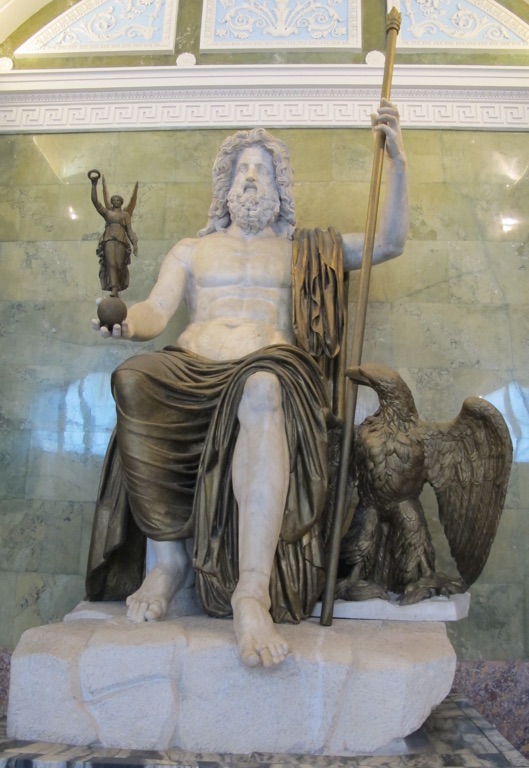
The Role of Mythology in Ancient Civilizations
Mythology has played a pivotal role in shaping the cultures and societies of ancient civilizations. These mythological narratives were not only sources of entertainment but also served as educational tools, imparting moral lessons and values to their audiences. In ancient Greece, for instance, the epic tales of Homer’s “Iliad” and “Odyssey” were more than just stories; they were integral to the education system, teaching virtues such as honor, bravery, and respect for the gods. Similarly, in ancient Egypt, the myth of Osiris, Isis, and Horus was not only a story about the cycle of life and death but also a foundational myth that reinforced the legitimacy of the pharaoh’s rule and the moral codes of society.
Mythology and Religious Practices
The intertwining of mythology with religious practices is evident across various cultures. In ancient Rome, festivals and ceremonies were often dedicated to gods and goddesses, with rituals designed to appease these divine beings and ensure their favor. The Vestal Virgins, for example, were priestesses of Vesta, the goddess of the hearth, and their role was crucial in maintaining the sacred fire, which was believed to be vital for the prosperity of Rome. In Norse mythology, rituals and sacrifices to gods like Odin and Thor were common practices, believed to ensure victory in battle and prosperity in life.
Mythological Creatures and Their Symbolism
Mythological creatures often symbolize human fears, desires, and natural phenomena. The Sphinx in Egyptian mythology, with the body of a lion and the head of a human, represents the power of the pharaoh, combining human intelligence with the strength of a lion. In Greek mythology, the Chimera, a fire-breathing monster with the body of a lion, the head of a goat, and the tail of a serpent, symbolizes the chaos and danger of the unknown. These creatures, while fantastical, served as metaphors for the challenges and mysteries that ancient peoples faced in their daily lives.
The Enduring Legacy of Mythology
The influence of ancient mythologies extends far beyond their original contexts, permeating modern literature, art, and media. Characters and themes from Greek, Egyptian, Norse, and Roman myths have found new life in contemporary books, movies, and video games, demonstrating the timeless appeal of these stories. The hero’s journey, a narrative structure found in many myths, has become a foundational concept in storytelling, influencing countless works of fiction. The enduring legacy of mythology underscores its universal relevance, reflecting the shared human experience across time and culture.
In conclusion, mythology is a testament to the creativity and imagination of ancient civilizations, offering insights into their beliefs, values, and fears. These stories, with their gods, heroes, and mythical creatures, continue to captivate and inspire, reminding us of the power of narrative to shape and reflect the human condition.
Mythology and Religion
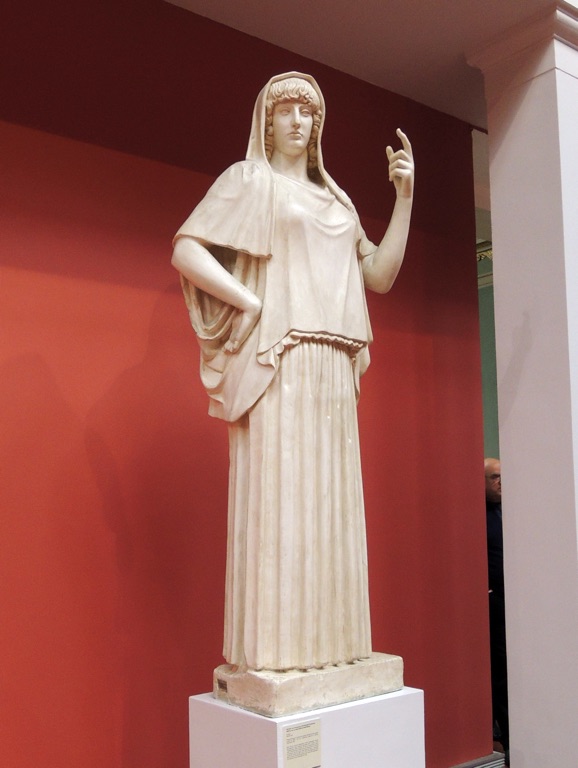
Hestia – The Greek Goddess
In the pantheon of ancient Greek deities, Hestia holds a unique and revered position. Known for her gentle and non-confrontational nature, Hestia, the goddess of the hearth, home, and domesticity, stands out among the often tempestuous gods and goddesses of Olympus. This article delves into the mythology, symbols, and significance of Hestia in ancient Greek religion and culture.
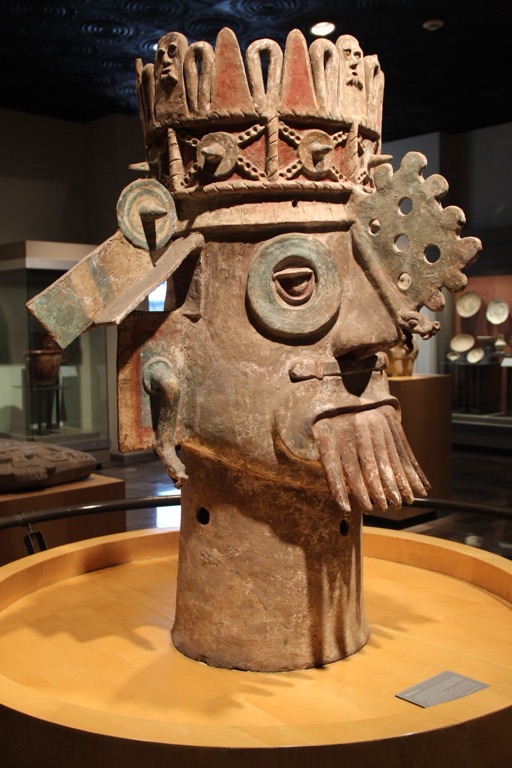
Tlaloc – The Aztec Rain God
Tlaloc, one of the most venerable deities in the Aztec pantheon, presided over the elemental domain of rain, fertility, and water. Esteemed as a life-giver and a harbinger of both prosperity and destruction, Tlaloc’s influence permeated the agricultural and daily lives of the Aztec people.
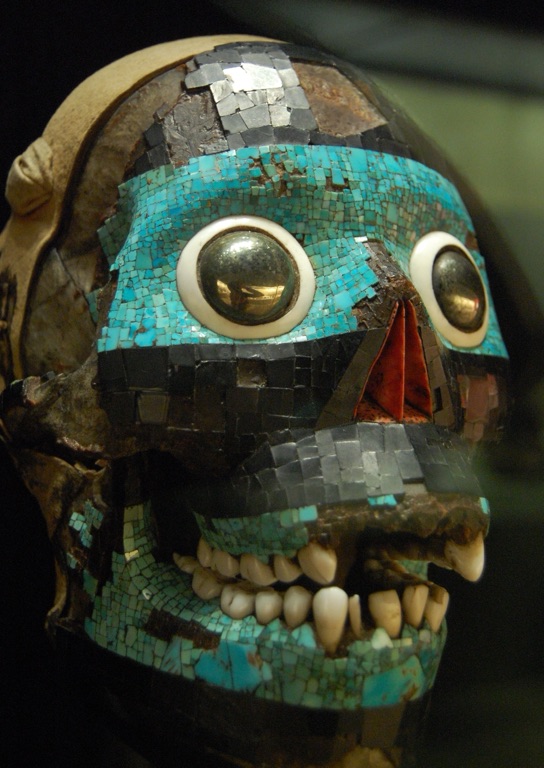
Tezcatlipoca – Aztec God
Tezcatlipoca, whose name translates to “Smoking Mirror” in Nahuatl, stands as one of the most complex and significant deities in the Aztec pantheon. Originating from pre-Columbian mythology, Tezcatlipoca is associated with a wide array of concepts including the night sky, the earth, rulership, divination, temptation, and warfare. His significance in Aztec religion is profound, embodying the omnipresent and omnipotent nature of a god who could influence the fate of humanity and the cosmos.
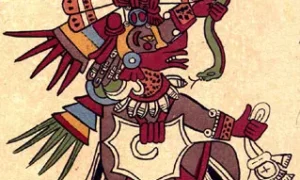
Quetzalcoatl – Aztec God
Quetzalcoatl, whose name translates to “Feathered Serpent” in Nahuatl, stands as one of the most significant deities in Mesoamerican cultures, particularly among the Aztecs and Toltecs. This deity embodies a complex blend of earthly and divine attributes, symbolizing the union of the heavens and the earth. Quetzalcoatl is not only a god of wind and air but also a creator deity who played a pivotal role in the creation and sustenance of mankind. His mythological narratives are rich and varied, reflecting his importance across different cultures in pre-Columbian Mesoamerica.
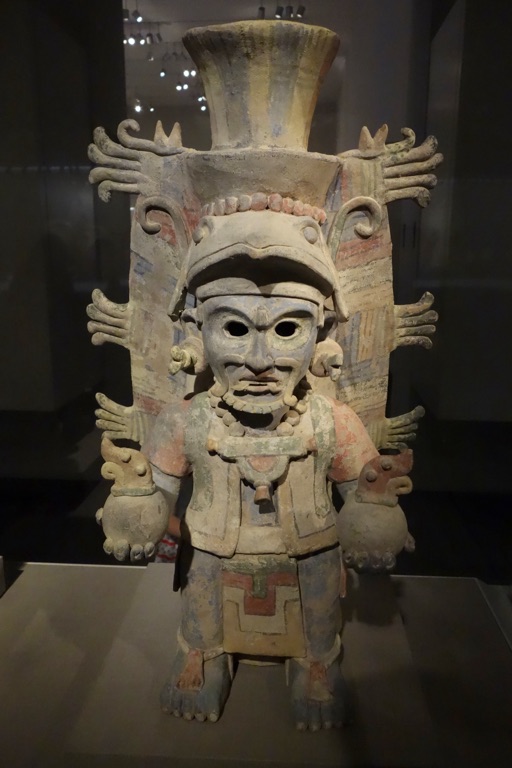
Huitzilopochtli – Aztec God
Huitzilopochtli, a central deity in Aztec mythology, stands as a god of the sun and war. His name, often translated as “Hummingbird of the South” or “Hummingbird on the Left,” reflects his significant attributes and the Aztec’s deep reverence for him. As a patron god of the Mexica (Aztec people), Huitzilopochtli’s influence permeated various aspects of Aztec culture, from warfare to religious practices.

